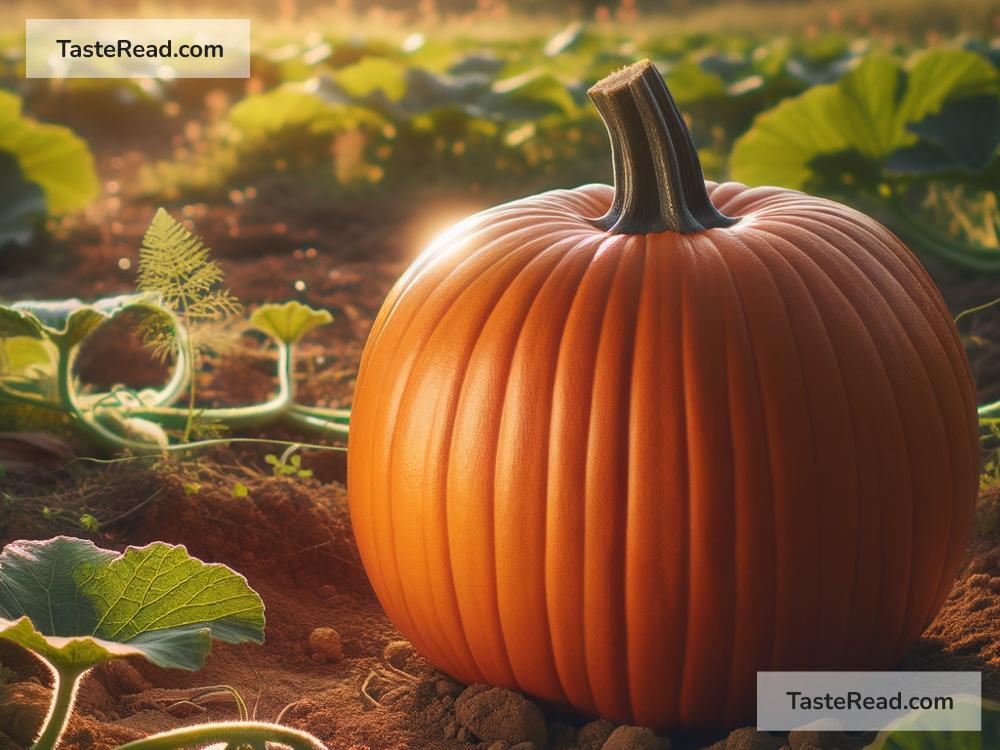The Mystery Behind Pumpkin’s Vibrant Orange Color
Pumpkins are a symbol of autumn, pies, and carved jack-o’-lanterns during Halloween festivities. They often grab our attention because of their bright, cheerful orange color. But have you ever wondered, why exactly are pumpkins orange? What is the science behind this vibrant hue? Let’s dive into the mystery!
What Makes Pumpkins Orange?
The orange color of pumpkins comes from natural pigments called carotenoids. Carotenoids are a type of compound that plants produce to help them absorb sunlight for energy through the process of photosynthesis. Carotenoids are responsible for yellow, orange, and red colors in many fruits and vegetables, like carrots, sweet potatoes, and even tomatoes.
One of the most important carotenoids in pumpkins is beta-carotene, which gives them their iconic orange shade. Beta-carotene is not only responsible for making pumpkins look pretty, but it’s also an important nutrient for humans. When we eat pumpkins, our bodies convert beta-carotene into vitamin A, which helps us maintain healthy vision, skin, and immune systems.
Why Do Pumpkins Have Carotenoids?
Carotenoids aren’t just about looking good. They play an essential role in the pumpkin’s life and health. These pigments help protect the plant from harmful sunlight while allowing it to use the energy from sunlight for growth. It’s almost like sunscreen and solar panels combined! Without carotenoids, pumpkins wouldn’t be able to grow properly and survive in the natural world.
Interestingly, carotenoids aren’t unique to pumpkins. Many other plants, fruits, and vegetables use these natural pigments to thrive. For example, carrots also get their orange color from beta-carotene. In fact, the word “carotenoid” comes from carrots!
Do All Pumpkins Have an Orange Color?
While most pumpkins are orange, they don’t have to be. There are many varieties of pumpkins, and some come in different colors like white, blue, green, or even yellow. These pumpkins still have carotenoids, but the proportion of different pigments varies, leading to unique colors. For instance, white pumpkins often have fewer carotenoids, while green pumpkins may also contain other pigments like chlorophyll (the green pigment found in leaves).
If you ever see a blue or grey pumpkin, it’s likely to have a combination of pigments that gives it that unusual shade. These colorful pumpkins are often grown for decorative purposes during autumn and are just as fascinating as their classic orange counterparts.
The Role of Genetics in Pumpkin Color
The color of a pumpkin isn’t just about pigments; genetics plays a big role too. Just like humans inherit traits like eye color from their parents, pumpkins inherit traits like their skin color from previous generations. Scientists and farmers have studied genetic diversity in pumpkins for years, and they’ve learned to breed pumpkins with specific colors and shapes. That’s why you can now find pumpkins of all sizes and shades at your local farm or store.
Farmers often choose specific types of pumpkins based on what people want. For example, they might grow larger orange pumpkins for carving, smaller white pumpkins for decorations, or sweeter varieties for cooking. All this diversity makes pumpkins one of the most interesting fruits around!
Fun Fact: The Connection Between Orange and Autumn
There’s another fascinating reason orange pumpkins have become so connected with the fall season. During autumn, the leaves on many trees also turn orange and red. This happens because carotenoids become more visible when the green chlorophyll in leaves breaks down. The bright fall foliage mirrors the color of pumpkins, creating a stunning natural harmony. It’s no wonder pumpkins are known as the ultimate fall fruit!
The Health Benefits of Pumpkin’s Orange Color
Besides making pumpkins look great, the carotenoids in their flesh have amazing health benefits for us. Beta-carotene is rich in antioxidants, which help protect cells in our bodies from damage. As mentioned earlier, it’s also a source of vitamin A, an essential nutrient for our health.
When you eat pumpkin – whether in soups, pies, or roasted form – you aren’t just enjoying a tasty treat. You’re also getting a boost of nutrients that can make you healthier. Plus, pumpkins are low in calories and high in fiber, making them a great addition to a balanced diet.
Conclusion: Nature’s Vibrant Masterpiece
The mystery behind a pumpkin’s orange color boils down to carotenoids, nature’s clever pigments. These compounds not only give pumpkins their glow but contribute to their survival and help us stay healthy. From genetics to farming practices, nature and human science have worked together to make pumpkins the stars of autumn.
So the next time you see a bright orange pumpkin, take a moment to appreciate its beauty and the science behind it. Whether you carve it, cook it, or use it as décor, a pumpkin’s vibrant color is a reminder of just how amazing nature really is.


